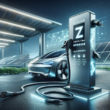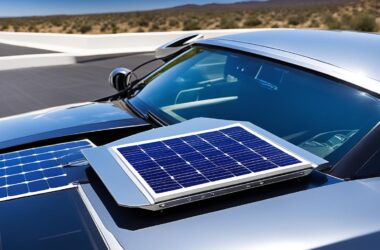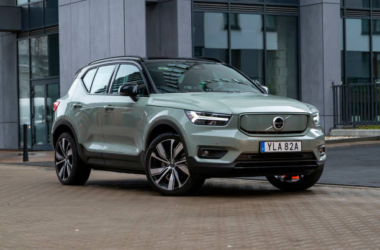As the adoption of electric vehicles (EVs) accelerates globally, understanding the intricacies of EV charging becomes crucial for current and prospective EV owners. Charging an electric vehicle is not as straightforward as refueling a gasoline car; it involves different types of chargers, each with its own set of specifications, uses, and benefits. This comprehensive guide aims to demystify EV chargers, exploring their types, key features, and the advantages they offer. Additionally, we will delve into the environmental impacts and future trends in EV charging, highlighting how these factors are shaping the trajectory of sustainable transportation.
Understanding the Basics of EV Chargers
Electric vehicle chargers are devices that convert electrical energy from a power source into a form that can be stored in an EV’s battery. They come in various formats, each designed to meet specific power needs and charging speeds. The basic principle behind EV charging is to replenish the battery’s energy, which depletes as the vehicle is driven. Chargers are generally categorized by their output capacity and speed, and are identified as Level 1, Level 2, or Level 3 chargers. Understanding how each of these works is essential for optimizing the charging experience and ensuring the longevity of the battery.
Different Types of EV Chargers Explained
Level 1 Chargers are the most basic type of chargers, typically using a standard household electrical outlet. They are easy to use but offer the slowest charging speed, often taking overnight or longer to fully charge an EV. Level 2 Chargers, on the other hand, require a higher-voltage power source and provide a quicker charging solution, making them suitable for home and public use. Level 3 Chargers, also known as DC fast chargers, are the fastest type of EV chargers available. They are primarily used in commercial settings and are crucial for long-distance travel, providing substantial battery charges in as little as 20 minutes.
Key Features of Level 1 EV Chargers
Level 1 chargers operate at 120 volts with a typical output of about 1.4 kilowatts. They are the most accessible type of EV charger because they can plug into any standard household outlet without requiring additional installation. This makes Level 1 chargers ideal for new EV owners or those who drive shorter distances. Although they charge slowly, Level 1 chargers can be perfect for overnight charging. They are also typically less expensive than other types of chargers and require minimal maintenance.
Advantages of Level 2 EV Charging Stations
Level 2 chargers operate at 240 volts and generally offer a power output range from 3.3 to 19.2 kilowatts, significantly cutting down the charging time compared to Level 1 chargers. These chargers can fully recharge most EV batteries in a few hours, making them more convenient for daily use. Level 2 chargers are versatile, being suitable for both residential and commercial installations. They also increase the resale value of a property, are eligible for various rebates and tax incentives, and can be integrated with smart home technologies.
Exploring Fast Charging with Level 3 Chargers
Level 3 chargers, or DC fast chargers, supply power directly to the battery at high speeds and voltages, typically ranging from 50 kilowatts to 350 kilowatts. They are designed to provide a rapid charge and can bring most EV batteries to 80% capacity in less than an hour. These chargers are ideal for highway rest stops and urban charging stations where quick turnaround is necessary. However, it is important to note that not all EVs are compatible with DC fast charging, and frequent use can potentially reduce battery life due to the heat generated during the fast charging process.
Choosing the Right EV Charger for Your Needs
Selecting the appropriate EV charger depends largely on the vehicle’s compatibility and the owner’s lifestyle. For those who primarily use their EV for short commutes and have access to overnight charging, a Level 1 charger might suffice. For EV owners who require faster charging or drive longer distances more frequently, investing in a Level 2 charger might be more appropriate. Alternatively, for those frequently traveling long distances, utilizing Level 3 chargers at public stations will be beneficial. Considering factors such as charging time, cost, and installation requirements will help in making an informed decision.
Environmental Benefits of Switching to EVs
The shift from gasoline-powered vehicles to EVs offers substantial environmental benefits, primarily due to the reduction in greenhouse gas emissions and pollutants. EVs contribute to lower carbon footprints as they produce zero tailpipe emissions. Moreover, as the electricity grid becomes greener through the increased integration of renewable energy sources, the overall environmental impact of EVs will continue to diminish. Additionally, EV batteries can be recycled, further reducing environmental degradation.
Future Trends in Electric Vehicle Charging
The future of EV charging is poised for significant advancements. Innovations such as wireless charging and improved battery technology are on the horizon. Infrastructure development is also a key focus, with plans to increase the number of public charging stations and integrate more Level 3 chargers. Furthermore, there is a growing trend towards the development of smart charging systems that manage the charging process based on grid demand and energy prices. These advancements will not only enhance the convenience of owning an EV but also contribute to broader adoption and environmental sustainability.
Understanding the different types of EV chargers and their respective benefits is essential for making informed decisions about electric vehicle ownership and usage. From the simplicity and accessibility of Level 1 chargers to the rapid charging capabilities of Level 3 stations, each type serves a distinct purpose. As technology advances and the world moves towards more sustainable transportation options, the role of efficient and effective EV charging will become increasingly important. By staying informed about these developments, individuals can contribute to a greener, cleaner future, while enjoying the numerous benefits that electric vehicles have to offer.







Appreciate this post. Will try it out. https://zeleniymis.Com.ua/